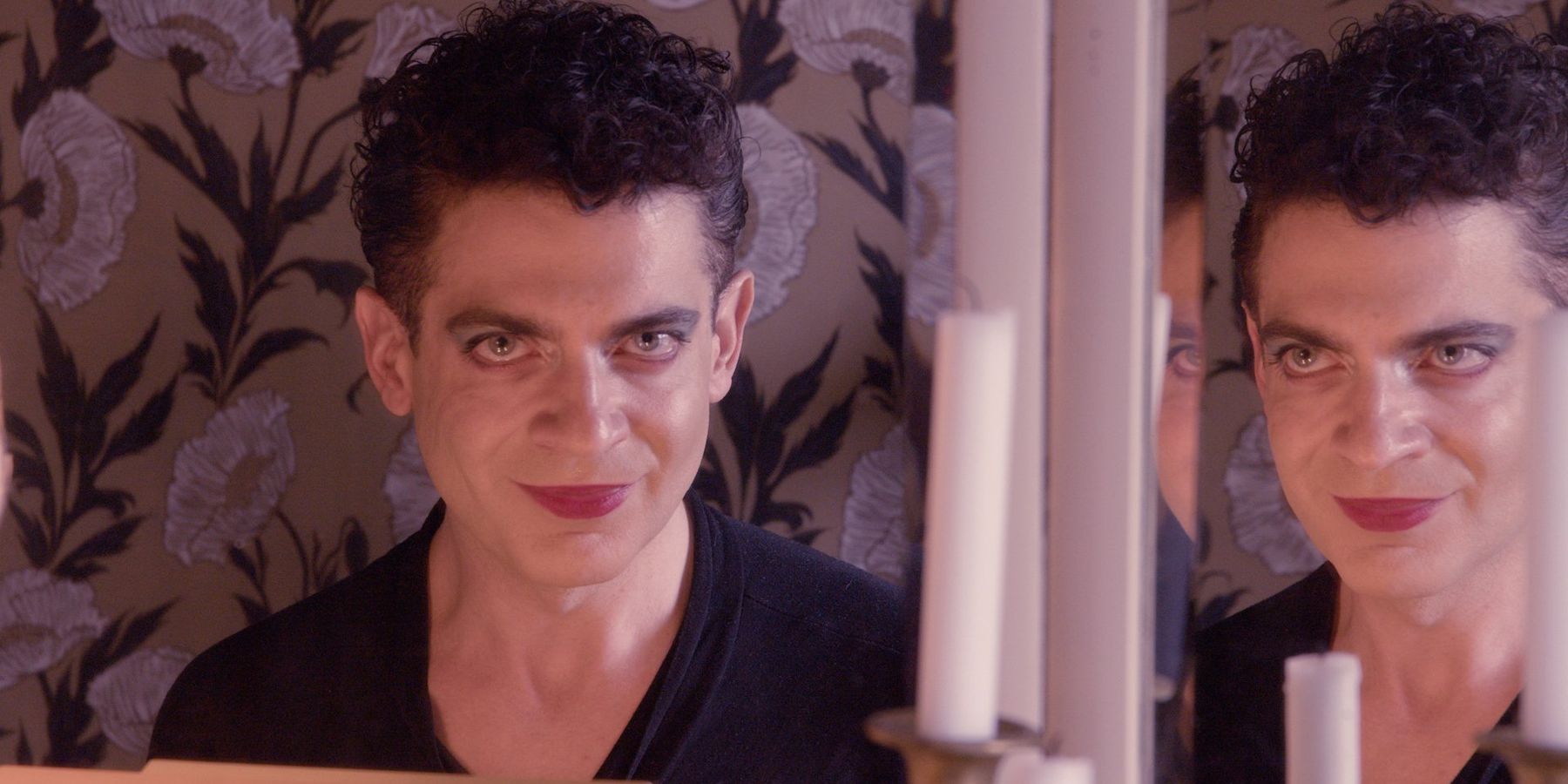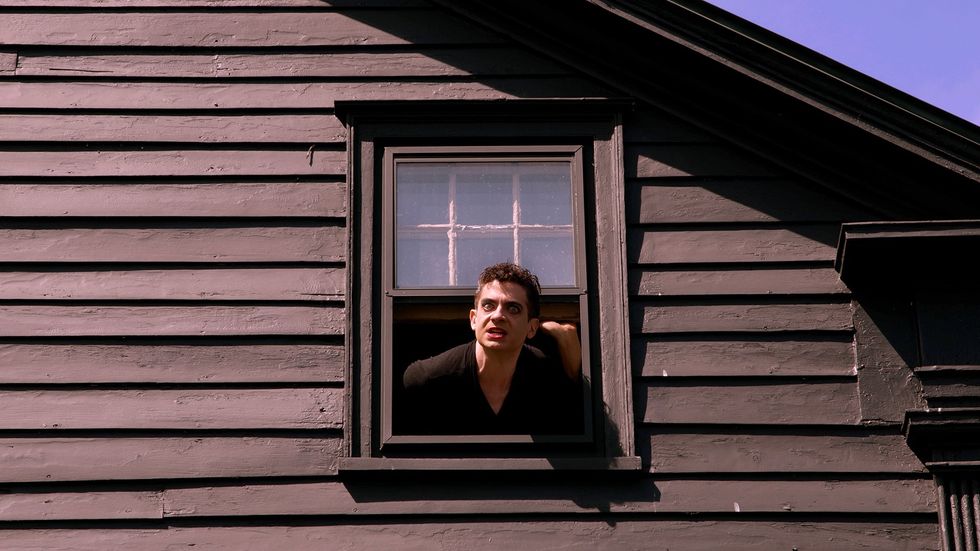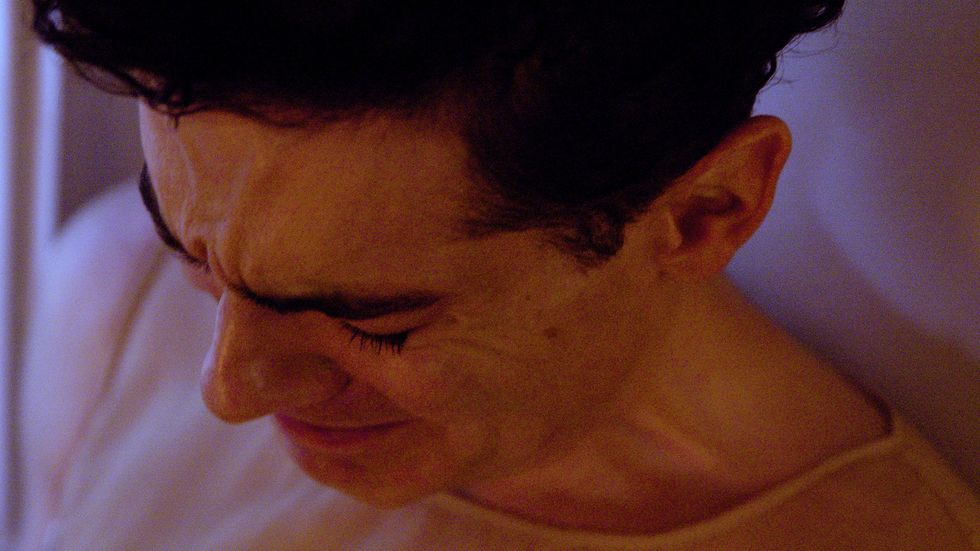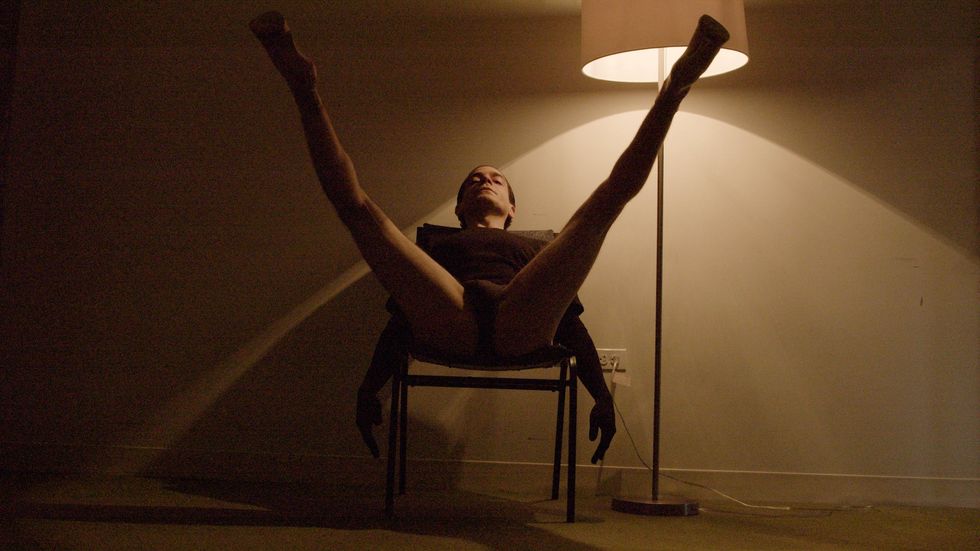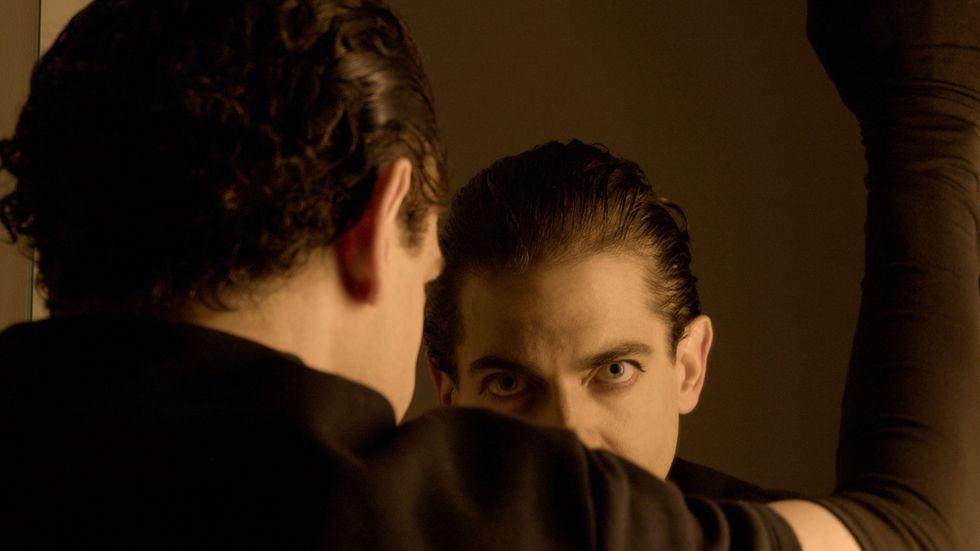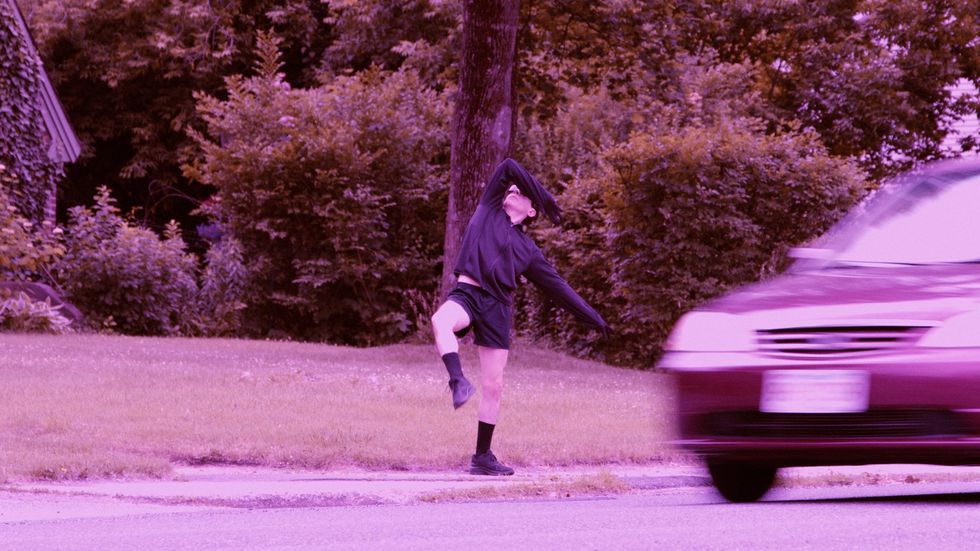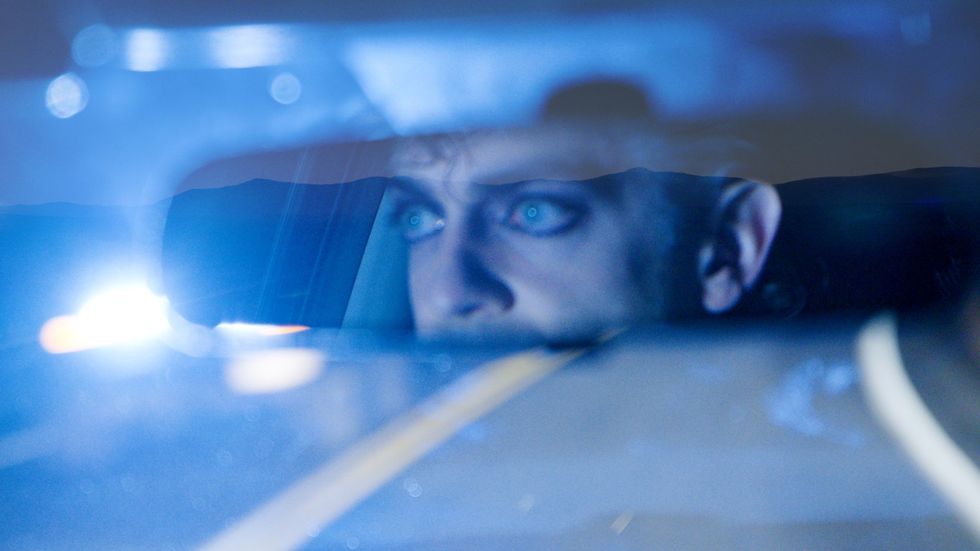As a queer person, it's hard to articulate the full impact that the AIDS epidemic has had and continues to have on the community decades later. There's the immediate tragedy of the lives lost to the disease and the systemic injustices it exposed on a broader societal level, but one of the more profound, unspoken tragedies of the AIDS epidemic is that it has deprived subsequent generations of queer folks connections to their collective past.
It's easy to wonder what the likes of Freddie Mercury or Keith Haring could have gone on to create had they not been cut down in their prime, but it's harder to imagine what sorts of wisdom and mentorship they could have gone on to impart on future generations. What would it be like if these creatives were still around to mentor other young talents, share their stories and guide them along their journies? What if queer people could actually meet their heroes instead of having to be satisfied with just mourning them? For a community that heavily relies on the importance of found family, a lost generation of queer elders is an immeasurable loss and has left many to fend for themselves.
Related | I'm The Little Lad Who Loves Fashion
It's this particular type of grief over a generation of dancers and choreographers that forms the basis of Jack Ferver's latest film, Nowhere Apparent, which was commissioned for ALL ARTS' 2023 Past, Present, Future Dance Film Festival. Perhaps best known as the Little Lad from the viral TikTok trend, the New York-based writer, choreographer and director's newest offering is a poetic meditation on queer isolation and feelings of abandonment by a generation of potential parental figures as a result of a failed response to the AIDS epidemic.
Drawing on a mix of archival research and newly shot performance footage, Nowhere Apparent plays out across a feverish series of theatrical vignettes that range from campy melodrama to manic introspection, interspersed with dance passages, culminating in a climatic performance set to Lana Del Rey's "Ride." Ferver's performance is intense and mesmerizing, vacillating between a methodical calm and being on the precipice of a full-on breakdown, reconciling personal trauma with historic injustice in a way that is viscerally captivating yet hard to fully define.
Ahead of the premiere of Nowhere Apparent, PAPER caught up with Jack Ferver to talk about the film's origins, the legacy left behind by the AIDS epidemic and queer isolation.
What initially sparked the idea for Nowhere Apparent?
In 2019, Marc Swanson asked me if I would want to create a performance for an exhibition he was going to have at Mass MoCA. At that time, Jeremy (Jacob) and I were the AIDS Oral History fellows at The Jerome Robbins Dance Division at the New York Public Library of the Performing Arts. Jeremy and I were listening to the archive, watching videos, reading journalism from the start and height of the AIDS crisis. Through it, we gained a more intimate knowledge of that time of artists who could have been mentors being killed by government inaction.
The AIDS crisis ended a world, and we as a society will forever live in that shadow.
Jeremy and I titled our lecture presentation and film for our fellowship: “Nowhere Apparent.”
What I pitched for my performance at Mass MoCA was inspired by this and where we find ourselves now in our climate crisis. Marc was surprised because he was planning on his work being about AIDS and the climate crisis.
When Jeremy and I were approached by All Arts, this became the opportunity to have a film that would draw from both the library project and the Mass MoCA work which is titled “Is Global Warming Camp? and other forms of theatrical distance for the end of the world.”
What sorts of references or inspirations did you look to in making the piece?
Queerness, Hollywood, neo-camp, solitude, the shattering of the “self” into distinct “selves” from trauma, the woods.
How did you go about translating these themes into the various vignettes and movement passages we see in the film?
We really thought through a lot of our despair as queers and what it means for so much irresponsibility from the government, from those in power, those authorities. Abuse of power. Parental abuse. What world will remain in 30 years? What kind of parents would allow that? What parents? Where?
As generations of queer folk become further and further removed from the AIDS epidemic, how do we ensure that this lost generation of dancers, choreographers, etc. remains a part of the fabric of queer history?
Research it, talk about it. I teach at Bard College and start every semester talking about AIDS and the culture wars. That gap we will never heal. Make work about it. The way queer art gets held back frequently means finding other ways to tour it. My performances never really tour, so I’m glad for the internet. And now making films. There is so much in our library systems that I wish were open to people from their homes. I think of Harry Shepard’s work, and watching it at the library, and thinking it looked like it was made at Danspance this week. I’m really happy that people are doing research and writing books and doing podcasts. All of these are helpful. A documentary film would be great. With what Jeremy and I began at the library we would certainly be open to talking with more people about a documentary.
How do you personally find connection to this lost generation of dancers and choreographers?
I had already met people in New York, who are survivors, or had lost loved ones during that time. It opened me into my own research. Harry Kondoleon’s Diary of a Lost Boy really affected me early on.
In the library fellowship, listening to Arnie Zane’s interview was so painful because I related so much. Too much. In our presentation, when I read what Zane said about gender in the dance world, I started crying and wasn’t able to recover. And I haven’t recovered. And I won’t. I’m angry. Everything is so behind where it could have been.
I never met him and I’ll always miss him. Arnie Zane, Harry Sheppard, Harry Kondoleon and Reza Abdoh are people I feel with me. Energy that is created cannot be destroyed.
Was there any particular moment during the making or conceptualization of the piece that surprised or resonated with you?
There was a PBS NewsHour from 1987 Jeremy found where heterosexual cis white male artists in power deny to discuss knowing people with AIDS in their dance communities.
It helped shape this piece into what isn’t said, what is left out, what is abandoned — the film becomes the haunting of that abuse, that abandonment.
Having just gone through a pandemic, what sort of parallels or differences do you see from the fallout we’re still dealing with today and the AIDS epidemic?
They are two totally different experiences but they are both high experiences of nonconsensual reality. The price of this nonconsensual reality is extreme trauma at best, death at worst. A huge difference is how quickly the Covid vaccines were made, which I believe was far less about public safety and far more about keeping people on the track, the conveyor belt of “the economy,” of which it is clear this “economy” is a big joke on the 99 percent, with the rich having only become richer during this pandemic.
What does “queer isolation” mean to you?
I am told by the majority that being queer is unnatural, that it doesn’t exist in the “natural world.” I am also told by the majority that I chose it. Using this logic means: I have chosen not to exist. I have direct experience of not being heard, of being lied about, of being lied to. I have direct experience of people working very hard to erase me and I have been infected by them and at times erased myself. Dead time while I’m still alive. That is what queer isolation means to me.
What do you hope people ultimately take away from the film?
Hope is a dangerous thing for a woman like me to have.
Photos courtesy of Jack Ferver
